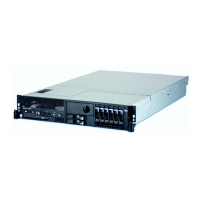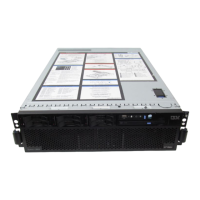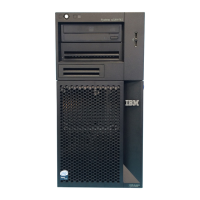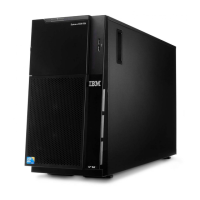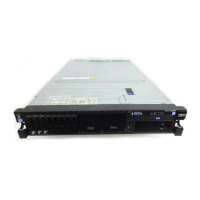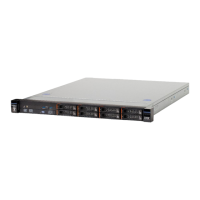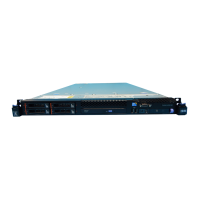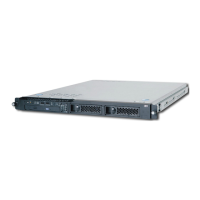virtual storage access method (VSAM): VSAM
is
an access method for direct
or
sequential processing of fixed and variable length records on direct access devices. The
records
in
a VSAM file can
be
organized either
in
logical sequence
by
a key field (key
sequence)
or
in
the
physical sequence
in
which they are written on the file (entry·
sequence). A key-sequenced file has an index, an entry-sequenced file does not.
volume:
1.
That
portion of a single unit of storage media which
is
accessible
to
a
single read/write mechanism, for example, a drum, a disk pack,
or
part
of
a disk
storage
module.
2.
A recording medium
that
b mounted and dismounted
as
a unit, for
example, a
reel
of magnetic tape, a disk pack, a data cell.
volume table
of contents (VTOC): A table associated with a direct-access volume,
which describes each data set on the volume.
VSAM
access
method services: A multifunction utility program that defines VSAM files
and
allocates space for them, converts indexed sequential files to key-sequenced files
with indexes, facilitates data portability between operating systems, creates backup
copies
of
files and indexes, helps make inaccessible files accessible, and lists file and
catalog entries.
w
wait
condition: The condition of a task that needs one
or
more events
to
occur before
the
task can be ready
to
be performed
by
the central processing unit.
wait state: The state of the system when no instructions are being processed, but the
system
is
not fully stopped. The system can accept
I/O
and external interruptions, and
can
be
put
through the
IPL
procedure.
wraparound:
1.
The continuation of
an
operation from the maximum addressable
location
in storage
to
the first addressable location.
2.
The continuation
of
register
addresses.
fr0":l the highest register address
to
the lowest. 3. On a CRT display device,
the
continuatIon
of
an operation, e.g., a read or cursor movement, from
~he
last
character position
in
the display buffer
to
the first position
in
the displav buffer.
Page
7·14

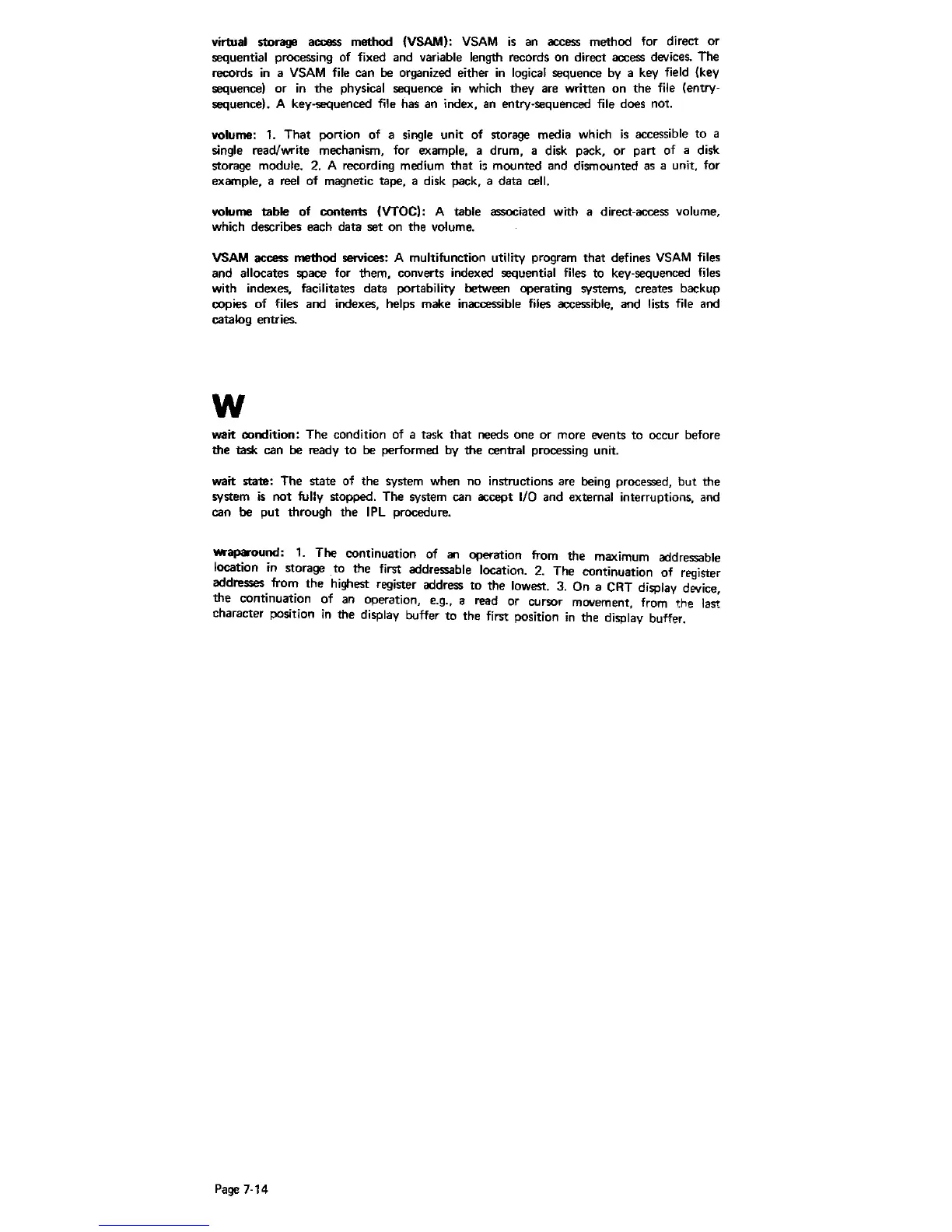